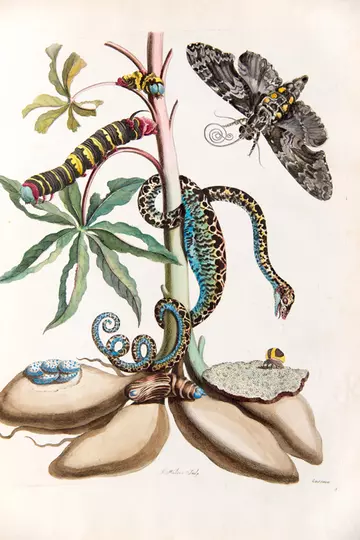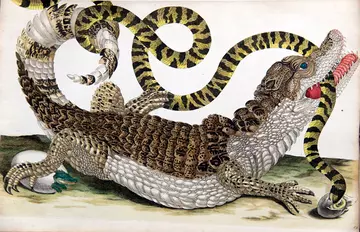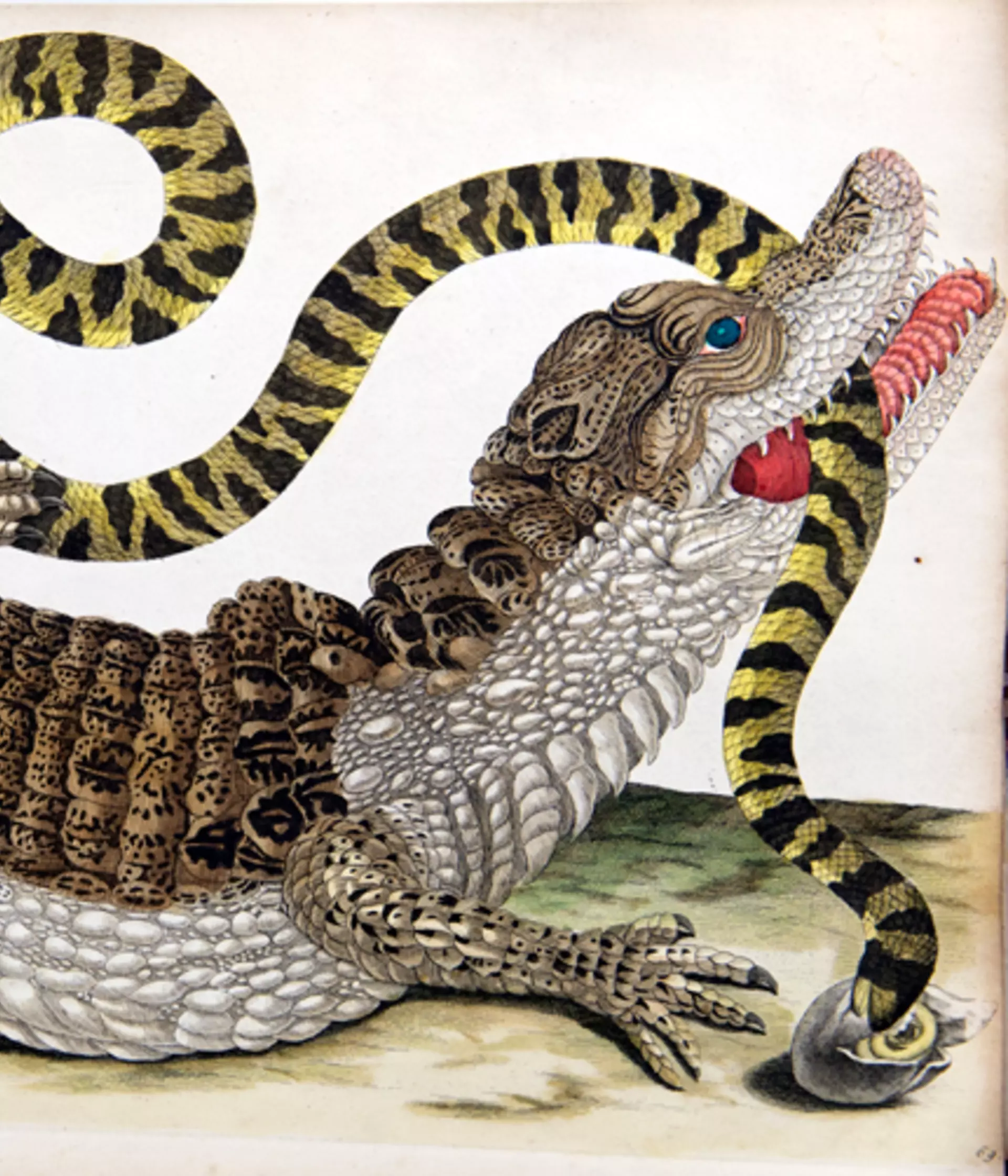
Maria Sibylla Merian art
Maria Sybilla Merian (1647-1717) was a trailblazing entomologist, scientific traveller, artist and herpetologist. She is increasingly well known for her work on insects and their life-cycles but she also planned to publish a book on reptiles. Her ‘reptile book’ was never published but she did include a number of amphibians and reptiles in her great work on the insects of Surinam and these are the illustrations we are highlighting in this blog, demonstrating her keen interest in herpetology.

All these illustrations are in our copy of Dissertation sur la génération et les transformations des insectes de Surinam... par Marie Sibille Merian. La Haye : Cosse, 1726. Parallel texts Latin-French. French translation by Jean Rousset de Missy. Our copy of her magnificent book was published posthumously in 1726 and contains some additional illustrations when compared to the edition published in 1705.

Life of Maria Merian
Maria Merian, at the age of 52 and accompanied by one of her daughters, Dorothea, sailed to Surinam in 1699. In the introduction to the book Maria Merian outlines some of the difficulties she encountered including extreme heat, the humidity, the impenetrable rain forest, the attitudes of the other Europeans there who were only interested in sugar production, the lack of advice and access to information. For example, plants would grow in her garden but there was no-one to help with identification. She became ill and had to return to Amsterdam earlier than planned where she worked on preparing for publication. Her other daughter, Johanna had married Jacob Henrik Herolt in 1692, he became a merchant trading with Surinam, when they moved there, she sent specimens to her mother who could sell them on to collectors, helping to cover the costs of the expedition. The results of Maria Merian’s journey was her magnum opus Dissertation sur la génération et les transformations des insectes de Surinam in which she depicted many species for the first time and frequently life size. Both her daughters assisted with the illustrations and the colouring of the prints (Heard, 2016).

Describing the Surinam toad
As well as studying the metamorphosis of insects in Surinam, she studied the metamorphosis of amphibians. Her book includes an image and description of the unusual Surinam toad, Maria Merian was the first European to describe this species. The female toad carries the fertilised eggs under a layer of skin on her back, they develop into tadpoles then froglets on her back before breaking through their mother’s skin to swim away.

Further reading:
Etheridge, Kay with translations from German by Michael Ritterson (2021). Maria Sibylla Merian’s artistic entomology ArtHerStory Post/Blog
Heard, Kate (2016). Maria Merian’s butterflies. London : Royal Collection Trust.
Magee, Judith (2009). Art of nature : three centuries of natural history art from around the world. London : Natural History Museum.
Owens, Susan (2007). Maria Sibylla Merian : ‘Great diligence, grace and spirit’ In Amazing rare things : the art of natural history in the age of discovery, David Attenborough et al. London : Royal Collection Publications.
Steinkraus, Emma (2019).The protofeminist insects of Giovanna Garzoni and Maria Sibylla Merian ArtHerStory Post/Blog
